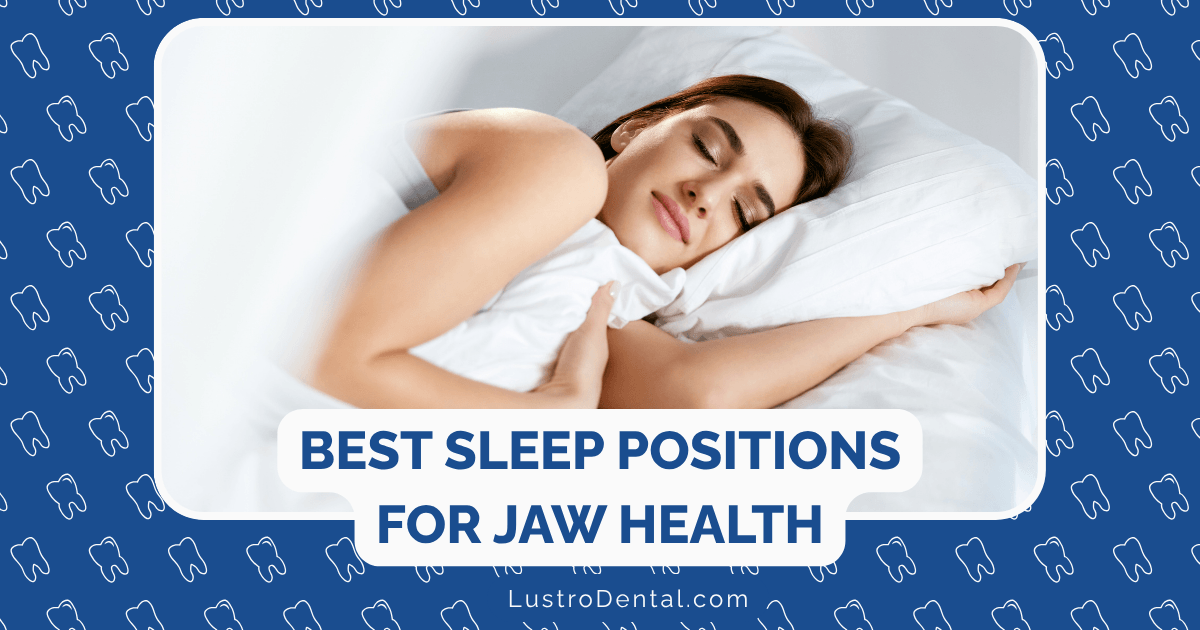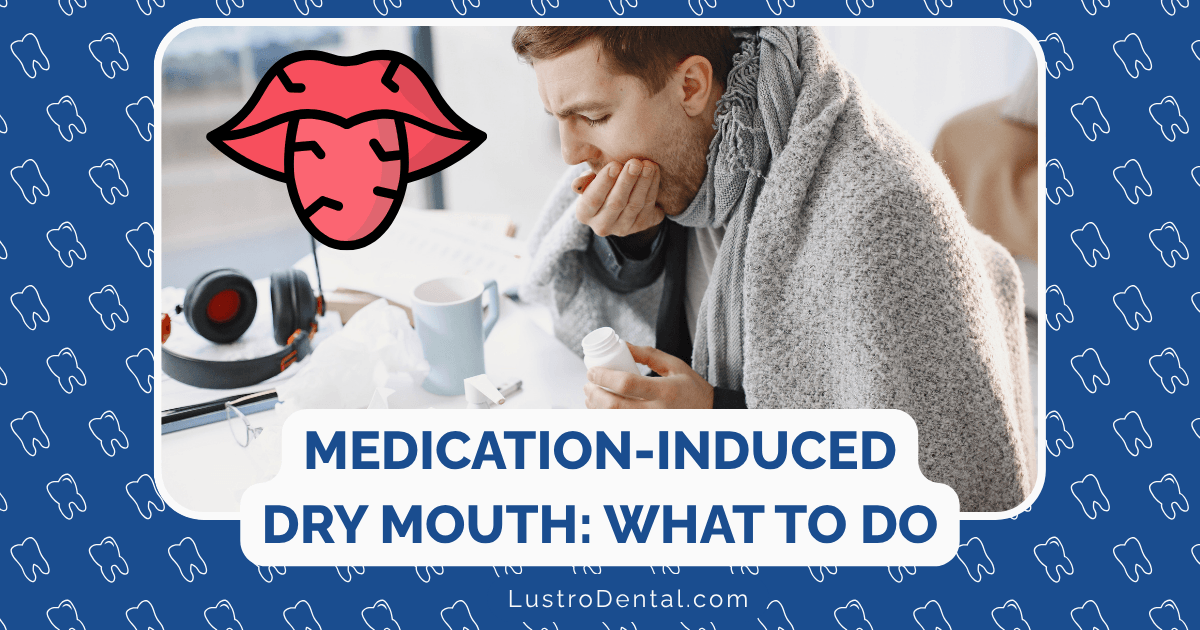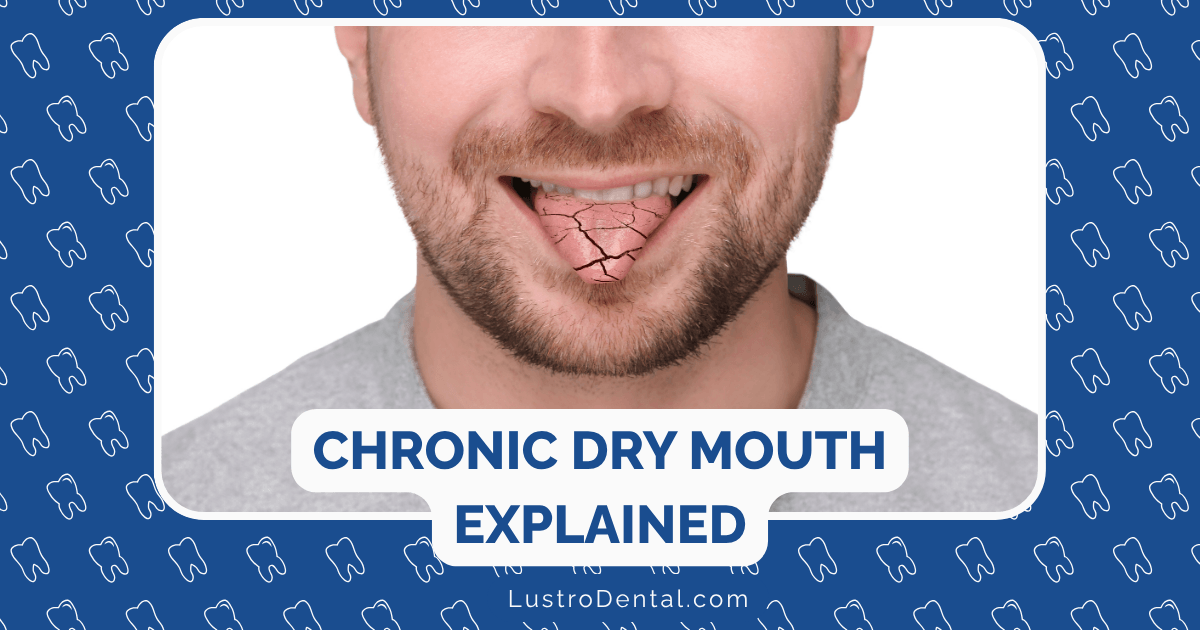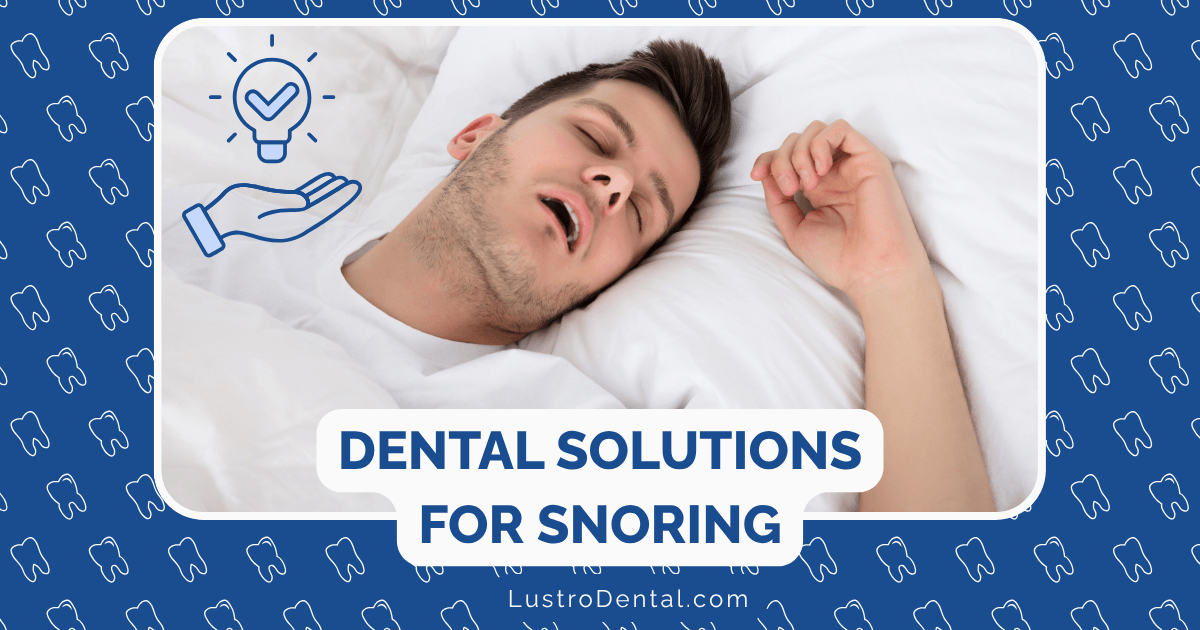Sleep Positions and Their Effect on Jaw Pain and Dental Health

We spend approximately one-third of our lives sleeping, yet many of us give little thought to how our sleeping positions might impact our oral health. As a dental health advocate, I’ve observed that the way we position ourselves during those crucial hours of rest can significantly influence jaw comfort, dental alignment, and overall oral wellness.
For the estimated 5-12% of American adults suffering from temporomandibular joint (TMJ) disorders—a figure that rises to approximately 12 million people according to recent research from Dental Care Burke—sleep position becomes even more critical. Even those without diagnosed TMJ issues may experience morning jaw pain, headaches, or dental discomfort related to how they sleep.
In this comprehensive guide, we’ll explore the intricate relationship between sleep positions and jaw health, backed by the latest research, and provide practical strategies to optimize your sleeping posture for better dental wellness.
The Science Behind Sleep Positions and Jaw Health
To understand how sleep positions affect our jaw and dental health, we first need to recognize the biomechanics at play during sleep.
The Temporomandibular Joint: A Complex Mechanism
The temporomandibular joint (TMJ) is one of the most complex and frequently used joints in the human body. This hinge-like structure connects your jawbone to your skull and enables essential functions like talking, chewing, and yawning.
During sleep, several factors can place stress on this delicate joint system:
- Gravitational forces: Different sleep positions create varying pressure patterns on the jaw and facial structures
- Muscle relaxation: As we sleep, our facial and jaw muscles relax, potentially allowing for misalignment
- Unconscious behaviors: Sleep bruxism (teeth grinding or clenching) affects up to 43% of people according to polysomnography studies cited in recent research
- Duration of pressure: Hours spent in a single position can compound minor stresses into significant discomfort
Dr. Sarah Johnson, a TMJ specialist, explains: “The jaw joint doesn’t exist in isolation. It’s influenced by head position, neck alignment, and even the curvature of your spine. When you sleep in certain positions, you’re essentially placing your TMJ in a particular posture for extended periods, which can either promote healing and relaxation or create tension and strain.”
How Different Sleep Positions Affect Your Jaw
Each sleeping position creates a unique set of circumstances for your jaw and surrounding structures:
Back Sleeping (Supine Position)
Sleeping on your back is generally considered the ideal position for TMJ health:
Benefits:
- Maintains neutral alignment of the head, neck, and spine
- Minimizes direct pressure on the jaw
- Reduces the likelihood of jaw clenching
- Distributes body weight evenly
Potential drawbacks:
- May worsen sleep apnea for some individuals
- Can increase snoring
- Some people find it difficult to maintain this position throughout the night
Side Sleeping (Lateral Position)
Side sleeping is the most common sleep position and can be either beneficial or problematic for jaw health, depending on specific factors:
Benefits:
- Can maintain good airway positioning
- May reduce snoring and minimize sleep apnea symptoms
- Generally comfortable and natural for most people
Potential drawbacks:
- Creates asymmetrical pressure on the jaw and face
- May cause jaw misalignment if pillows don’t provide proper support
- Can lead to facial wrinkles over time (a cosmetic rather than functional concern)
Dr. Michael Chen, orthodontist, notes: “The key with side sleeping is proper support. Without the right pillow height and firmness, side sleeping can place lateral stress on the TMJ, potentially exacerbating existing issues or creating new ones.”
Stomach Sleeping (Prone Position)
This position is generally considered the least favorable for jaw and dental health:
Drawbacks:
- Requires turning the head to one side, creating rotational stress on the neck and jaw
- Places direct pressure on the jaw and facial structures
- Often leads to uneven force distribution across the TMJ
- May contribute to facial asymmetry over time
- Can cause misalignment of the spine
Research published by Balance Epigenetic Orthodontics confirms that stomach sleeping places unnecessary strain on both the jaw and neck, potentially worsening jaw pain and breathing issues.
The Connection Between Sleep Positions and Common Jaw Issues
Specific jaw and dental problems show strong correlations with sleep positioning:
TMJ Disorders and Sleep Position
For the millions of Americans suffering from TMJ disorders, sleep position can significantly impact symptom severity. A 2025 study from Columbia TMJ and Pain found that TMJ pain often intensifies during sleep, creating a cycle of discomfort and sleep disruption.
Key findings on TMJ and sleep positions include:
- Back sleeping typically provides the most relief for acute TMJ pain
- Stomach sleeping frequently exacerbates TMJ symptoms
- Side sleeping with improper pillow support can worsen asymmetrical TMJ issues
- Sleep position modifications are now considered a standard part of conservative TMJ treatment
Bruxism (Teeth Grinding and Clenching)
Sleep bruxism—the unconscious grinding or clenching of teeth during sleep—shows interesting correlations with sleep positioning. According to a comprehensive study published in PubMed Central in 2025:
- Sleep bruxism was significantly associated with masseter muscle pain (p = 0.020)
- Different types of bruxism correlate with specific pain patterns
- Sleep position can either facilitate or inhibit bruxism behaviors
The research found that 65% of participants were at high risk for parafunctional movements like teeth grinding and clenching, highlighting the prevalence of this issue.
Sleep Apnea and Its Relationship to Jaw Position
The relationship between sleep positioning, jaw alignment, and breathing is particularly significant. Research from Dental Care Burke reveals that:
- TMJ issues can lead to sleep positions that narrow the airway
- Approximately 30 million Americans have sleep apnea, but only 6 million are diagnosed
- The position of the jaw during sleep directly affects airway patency
- Back sleeping may worsen sleep apnea for some, while side sleeping often improves it
- Teeth grinding and jaw clenching can exacerbate both TMJ and sleep apnea symptoms
This bidirectional relationship creates complex challenges requiring comprehensive management approaches.
Optimizing Sleep Positions for Better Jaw Health
Based on the latest research and clinical experience, here are evidence-based recommendations for improving your sleep position to support jaw and dental health:
For General Jaw Health and Prevention
If you don’t currently experience jaw pain but want to maintain optimal dental health:
- Prioritize back sleeping when possible
- Train yourself gradually by starting the night on your back
- Use a supportive pillow that maintains the natural curve of your neck
- Consider a small pillow under your knees to reduce lower back pressure
- If side sleeping is preferred:
- Choose a pillow with proper height to keep your spine and neck aligned
- Ensure your pillow fills the space between your ear and shoulder
- Consider a body pillow to prevent rolling onto your stomach
- Alternate sides to avoid creating facial asymmetry
- Avoid stomach sleeping
- If you habitually sleep on your stomach, try placing a pillow under one side of your torso to create a modified side-sleeping position
- Use physical barriers like pillows to prevent rolling onto your stomach
For Existing TMJ Disorders
If you’ve been diagnosed with TMJ disorder or regularly experience jaw pain:
- Consult with specialists
- Work with both dental and sleep professionals to develop a personalized approach
- Consider a sleep study if you experience significant morning jaw pain
- Implement optimal positioning
- Back sleeping is typically recommended as the primary position
- If side sleeping is necessary, ensure exceptional pillow support
- Use a specialized TMJ pillow designed to minimize jaw pressure
- Consider nighttime oral appliances
- Custom-fitted night guards can protect against teeth grinding
- Specialized TMJ splints may help maintain proper jaw alignment during sleep
- Oral appliances for sleep apnea can address both breathing and jaw positioning
Dr. Jennifer Williams, TMJ specialist, advises: “For my patients with TMJ disorders, I recommend a multi-faceted approach that includes both optimal sleep positioning and appropriate dental appliances. The combination typically yields better results than either approach alone.”
For Bruxism (Teeth Grinding/Clenching)
If you grind or clench your teeth during sleep:
- Position modifications
- Back sleeping generally reduces grinding intensity
- Ensure your neck and head are well-supported to minimize muscle tension
- Supportive devices
- Custom-fitted night guards protect teeth from grinding damage
- Consider specialized bruxism appliances that discourage clenching
- Pre-sleep routine
- Implement jaw relaxation exercises before bed
- Apply warm compresses to jaw muscles to reduce tension
- Practice stress-reduction techniques like meditation or deep breathing
The Ideal Pillow: A Critical Component
Your pillow plays a crucial role in maintaining proper jaw alignment during sleep. Here’s what to look for:
For Back Sleepers
- Height: Relatively thin (3-5 inches)
- Support: Medium firmness with good neck support
- Material: Memory foam or latex often provides ideal conformity
- Shape: Cervical pillows with a depression for the head and support for the neck
For Side Sleepers
- Height: Thicker (4-6 inches) to fill the space between ear and shoulder
- Support: Firmer to maintain head alignment
- Material: Memory foam, latex, or high-quality fiberfill
- Shape: Contoured designs that support the neck
Specialized TMJ Pillows
Several pillows are specifically designed for TMJ sufferers:
- Cervical traction pillows: Help maintain proper neck alignment
- CPAP-compatible TMJ pillows: Address both sleep apnea and jaw positioning
- Adjustable pillows: Allow for customization as symptoms change
Case Studies: Sleep Position Modifications and Outcomes
Michael’s Experience: From Stomach to Back Sleeping
Michael, a 42-year-old marketing executive, had suffered from morning jaw pain and headaches for years. As a lifelong stomach sleeper, he was reluctant to change his habits but agreed to try back sleeping after his dentist identified signs of TMJ inflammation.
Approach:
- Gradual transition to back sleeping using a wedge pillow
- Custom night guard to reduce grinding impact
- Pre-sleep relaxation routine to reduce muscle tension
Results after 60 days:
- 70% reduction in morning jaw pain
- Virtual elimination of morning headaches
- Improved sleep quality with fewer awakenings
- Reduced facial asymmetry noted at dental follow-up
Michael notes: “The first week was challenging, but by the second week, I was actually sleeping better on my back than I ever did on my stomach. I wish I’d made this change years ago.”
Jennifer’s Journey: Side Sleeping Optimization
Jennifer, a 35-year-old teacher with mild TMJ disorder, was a dedicated side sleeper who experienced intermittent jaw clicking and discomfort. Rather than changing her preferred position entirely, her dental team focused on optimizing her side-sleeping approach.
Approach:
- Transition to a specialized contoured pillow
- Implementation of a small pillow between knees to improve overall alignment
- Custom-fitted night guard
- Training to alternate sides throughout the night
Results after 90 days:
- 85% reduction in jaw clicking
- Elimination of morning jaw stiffness
- Improved neck comfort
- Reduction in TMJ-related headaches
Jennifer shares: “I was relieved I didn’t have to completely change how I sleep. The pillow made such a difference—I could feel my neck and jaw were better aligned from the first night.”
Beyond Sleep Position: Complementary Approaches
While sleep position is crucial, a comprehensive approach to jaw health during sleep includes:
Stress Management
Since stress is a significant contributor to jaw tension and bruxism:
- Bedtime relaxation practices: Progressive muscle relaxation, meditation, or deep breathing
- Cognitive techniques: Journaling before bed to “park” stressful thoughts
- Consistent sleep schedule: Regularizing sleep-wake times to reduce overall stress
Dental Appliances
Custom-fitted devices can work synergistically with proper sleep positioning:
- Occlusal splints: Protect teeth and redistribute jaw forces
- Mandibular advancement devices: Address both sleep apnea and jaw positioning
- Specialized TMJ appliances: Target specific aspects of TMJ dysfunction
Daytime Habits That Affect Nighttime Jaw Health
What you do during the day influences your jaw’s condition during sleep:
- Posture awareness: Poor daytime posture can carry over into sleep positioning
- Jaw exercises: Strengthening and stretching routines for jaw muscles
- Diet considerations: Avoiding excessively chewy foods that fatigue jaw muscles
- Hydration: Maintaining proper fluid intake for optimal muscle function
Special Considerations for Different Populations
Children and Adolescents
Young people have unique considerations:
- Growing bodies may be more adaptable but also more vulnerable to long-term effects of poor sleep positioning
- Orthodontic treatments may influence optimal sleep positions
- Developing good sleep posture habits early can prevent problems later in life
Older Adults
Aging brings specific challenges:
- Increased prevalence of arthritis in the TMJ
- Greater likelihood of sleep disruption
- Potential medication effects on jaw muscle tension
- Often longer recovery time from position-related discomfort
Those with Multiple Health Conditions
People managing several health issues face complex decisions:
- Balancing positioning needs for TMJ with those for other conditions like GERD or heart failure
- Coordinating recommendations from different specialists
- Prioritizing positions that address the most symptomatic conditions
The Future of Sleep Positioning and Jaw Health
Research in this field continues to evolve, with several promising developments:
Technological Innovations
- Smart pillows: Adjustable pillows that respond to movement and pressure
- Position monitoring devices: Wearable technology that tracks sleep positions and their effects
- Biofeedback systems: Tools that alert users to jaw clenching during sleep
Research Directions
Current research is exploring:
- The genetic components of TMJ disorders (up to 27% of cases may have genetic factors)
- Sex-specific approaches to sleep positioning (women are more commonly affected by TMJ disorders)
- The relationship between sleep positions, jaw health, and overall systemic inflammation
Conclusion: Finding Your Optimal Sleep Position
The relationship between sleep positions and jaw health represents a crucial yet often overlooked aspect of dental wellness. By understanding how your sleeping posture affects your temporomandibular joint, muscles, and overall oral structures, you can make informed choices that support both restful sleep and jaw comfort.
Remember that transitioning to a new sleep position takes time and patience. Most people require 2-4 weeks to adapt to a new sleeping posture, so persistence is key. Start by implementing small changes, use supportive pillows and devices, and work with dental professionals to address underlying issues.
Your jaw health doesn’t have to be left to chance while you sleep. With thoughtful positioning strategies and proper support, you can wake up refreshed, pain-free, and with a healthier temporomandibular system. Sweet dreams and happy jaws await!
Have you noticed connections between your sleep position and jaw comfort? What changes have helped you? Share your experiences in the comments below.







